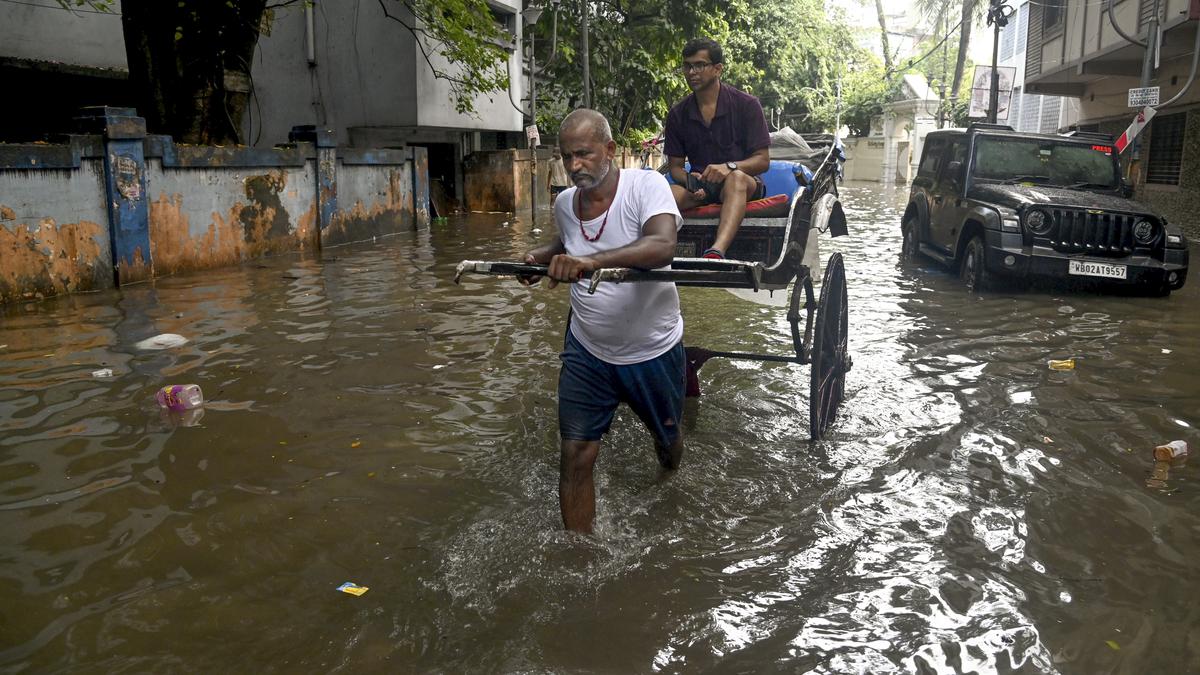25 September 2025 The Hindu Editorial
What to Read in The Hindu Editorial( Topic and Syllabus wise)
Editorial 1: Mixed signals
Context
India should be prepared for the outcome that discussions with the U.S. may not succeed.
Introduction
India–U.S. relations are showing renewed momentum, with high-level meetings, trade talks, and diplomatic outreachsignaling efforts to restore balance. Despite progress on issues like defence, energy, and market access, the partnership faces hurdles due to tariffs, visa restrictions, and differing stands on Russia and Pakistan. These dynamics highlight both the opportunities and fragility in the evolving strategic partnership.
Signs of Recovery in India-U.S. Relations
- Trade negotiatorshave resumed discussions in Delhi and Washington.
- S. Secretary of State Marco Rubiomet External Affairs Minister S. Jaishankar in New York, while a U.S. Congressional delegation visited India.
- The S. Ambassador-Designateto India, Sergio Gor, has nearly completed his appointment process and awaits Senate confirmation.
- Possibilities are being explored for meetings between PM Modiand President Trump at the ASEAN Summit and a delayed Quad Summit in India.
Diplomatic Engagements and Key Issues
- Jaishankar’s frequent visitshighlight the centrality of the Rubio-Jaishankar dialogue, with his fifth official tripin nine months.
- The talks have focused on maintaining consistent dialoguedespite tensions over tariffs and trade policies.
- Discussions covered areas such as trade, defence, energy, pharmaceuticals, and critical minerals.
- Commerce Minister Piyush Goyal’strade negotiations show optimism, with compromises likely on agriculture, dairy, and GM food market access, paving the way for a possible free trade agreement.
Challenges and Points of Friction
- Trump’s decisionto revoke India’s sanctions waiver for Chabahar port operations and impose a $100,000 visa fee on H-1B professionals were seen as setbacks.
- At the UN General Assembly, Trumpindicated further pressure on India over Russian oil imports and reiterated interest in mediating the India-Pakistan conflict — an unwelcome stance for New Delhi.
- These moves could be negotiation tacticsto maintain leverage in trade talks or signal a lack of commitment to a stable partnership.
- Indiamust prepare for more hurdles but also remain willing to disengage if the relationship becomes unsustainable.
Conclusion
The trajectory of India–U.S. ties reflects a blend of cooperation and confrontation. While dialogues on trade, security, and critical minerals offer hope, policy shocks such as visa fees and waiver revocations erode trust. For India, sustaining engagement with patience, yet retaining the option to walk away when needed, will be crucial to ensuring a balanced and resilient relationship.
Editorial 2: Follow the rains, not the calendar, to fight floods
Context
Urban planning in India continues to reflect outdated climate patterns rather than present realities.
Introduction
Urban India readies for the monsoon each year with drain desilting and emergency drills, yet rains—often untimely and intense—bring flooded roads, waterlogged homes, and stranded commuters. The core issue is cities built for a climate past. This year, Punjab, Delhi, Gurugram, Uttarakhand, Himachal Pradesh, and Kolkata faced severe floods, cloudbursts, and torrential rains, even into September.
Changing Monsoon Realities in Indian Cities
- Early rains: Mumbai received 4 mmin 24 hours (May), followed by 161.9 mm the next day; Delhi saw 81 mm in hours, crippling drains.
- Outdated preparedness: Drain cleaning still follows the June monsoon calendar, ignoring shifting patterns.
- Rising frequency: 64% of tehsils face 1–15 more heavy rainfall days, notably in Maharashtra, Tamil Nadu, Gujarat, Karnataka.
- High impact: Floods now cause maximum loss to life and property; a single flood can cost about ₹8,700 crore.
- Greater intensity: Short bursts (50 mm in 1 hour every 2 years) replace day-long rains, leaving cities little response time.
- Call to action: Urban planning must adapt to new rainfall patternsto build flood-resilient cities.
Urban Flood Resilience: Key Measures for Indian Cities
- Incorporate sub-daily rainfall analysis:
- Move beyond long-term averages; integrate short-duration, high-intensity rainfallinto infrastructure design.
- Use real-time sub-daily rainfall datato guide drainage operations and public alerts.
- Example: BMC plans to widen drainsto handle up to 120 mm/hour.
- Align stormwater and waste management schedules:
- Unmanaged waste(plastic, debris) blocks drains and worsens flooding.
- Stormwater and sanitation departmentsmust coordinate, especially during high-risk periods.
- Example: Vijayawada’s monsoon response teamscoordinate drainage, sanitation, and planning to reduce waterlogging.
- Rainfall alertsshould trigger joint sanitation drives and inspections.
- Update infrastructure with evolving rainfall patterns:
- IDF curvesmust be revised every 5–10 years to match changing rainfall intensity, duration, and frequency.
- Drainage designshould include micro-catchment hydrology and topography, separate from sewer networks.
- Example: BMCproposes expanding stormwater capacity and preparing a new drainage master plan.
- Shift mindset:
- Cities fail not due to total seasonal rainfall but hourly extremes.
- Preparedness should focus on current rainfall realitiesrather than fixed seasonal schedules.
Conclusion
Urban flooding in India is driven not by total rainfall but by short, intense, and unpredictable events. Cities must adopt data-driven planning, coordinate stormwater and waste management, and update infrastructure design based on evolving rainfall patterns. By aligning preparedness with reality, urban areas can build resilience, reduce waterlogging, and safeguard lives and property against increasingly severe monsoons.
![]()


